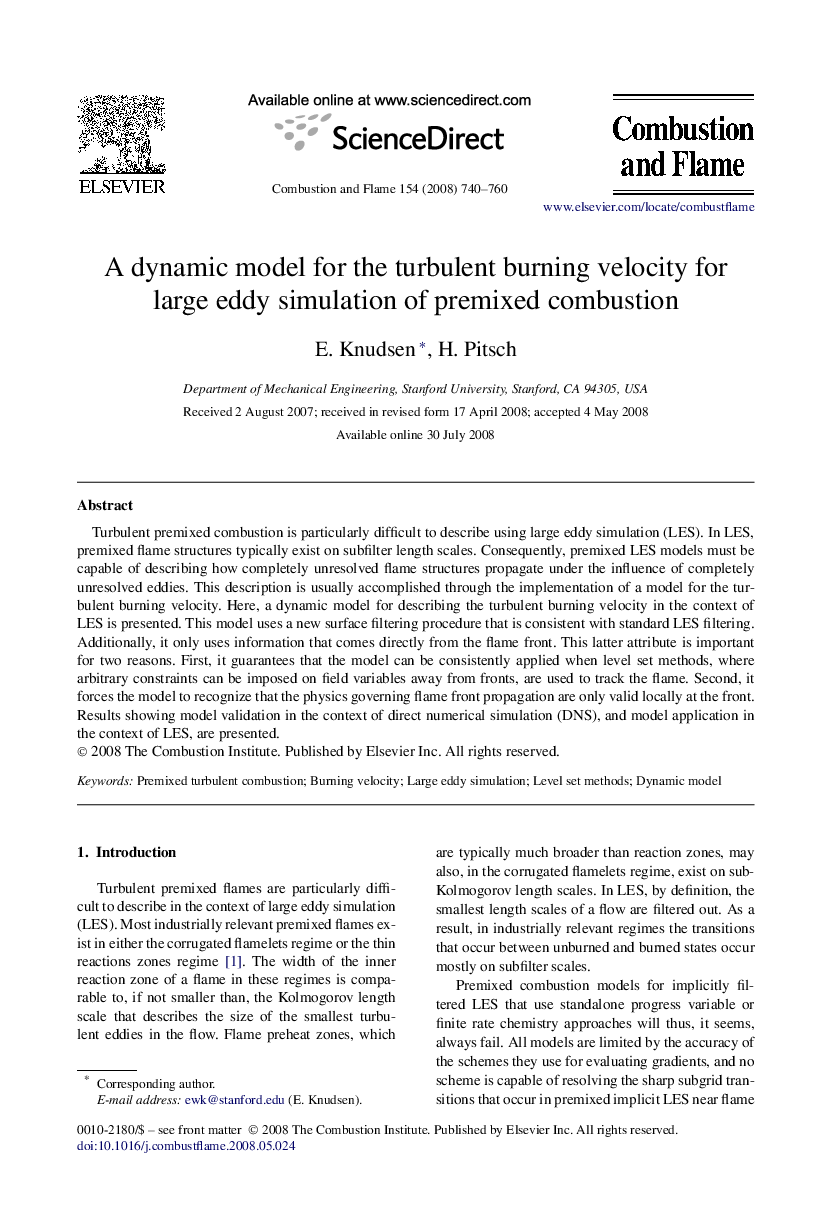| Article ID | Journal | Published Year | Pages | File Type |
|---|---|---|---|---|
| 167721 | Combustion and Flame | 2008 | 21 Pages |
Turbulent premixed combustion is particularly difficult to describe using large eddy simulation (LES). In LES, premixed flame structures typically exist on subfilter length scales. Consequently, premixed LES models must be capable of describing how completely unresolved flame structures propagate under the influence of completely unresolved eddies. This description is usually accomplished through the implementation of a model for the turbulent burning velocity. Here, a dynamic model for describing the turbulent burning velocity in the context of LES is presented. This model uses a new surface filtering procedure that is consistent with standard LES filtering. Additionally, it only uses information that comes directly from the flame front. This latter attribute is important for two reasons. First, it guarantees that the model can be consistently applied when level set methods, where arbitrary constraints can be imposed on field variables away from fronts, are used to track the flame. Second, it forces the model to recognize that the physics governing flame front propagation are only valid locally at the front. Results showing model validation in the context of direct numerical simulation (DNS), and model application in the context of LES, are presented.
